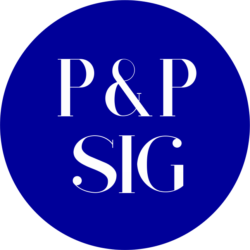New Members and Mail Lists
Welcome to all our new P&P SIG members. Unless you opt out of receiving SIG email, we subscribe you to our Announcement and Discussion Lists. The Announcement List is used for official SIG announcements. Participating in the Discussion List is a major benefit of membership in the P&P SIG. You will hear from other members periodically and be able to exchange ideas and information with them.
To ensure that you receive our email, please add these addresses to your email contacts or white list.
- pp-discuss at mailer.stc.org
- pp-announce at mailer.stc.org
STC sends subscribers a monthly reminder with your mail list passwords and instructions.
Membership Renewals
STC is a non-profit professional association. We depend on your dues to support programming and other activities. 2014 STC Memberships expired on December 21st. Membership lists will be purged on Jan 15th. If you haven’t already renewed your membership, please do so now.
Corporate Value Program
Could your company benefit from the Corporate Value Program?
- Organizations with five or more technical communicators can save on membership dues.
- Organizations that sell technical communication products and services can benefit an array of high-impact, low-cost, exclusive marketing opportunities.
For more information, contact STC Business Development Manager Stacey O’Donnell at stacey.odonnell@stc.org or +1 (571) 366-1915.
Webinar
Forty three people attended our October 16th webinar by Early & Associates (www.earley.com): SharePoint Information Architecture: Improving the Policy and Procedure Process.
If you missed it, SIG members can still view the recording at http://tinyurl.com/STC-PP-SIG-webinar.
Policies & Procedures Progression
Topics for the Policies and Procedures Progression at the 2015 STC Summit will include:
- Links, references and resources for policy and procedures analysts. A presentation and discussion of a bibliography of printed and online resources for everyday use in policy and procedure. — Dawnell Claessen
- Topic: Career Development in Policies and Procedures. Practical tips and ways to develop your skills set, gain experience and advance your career in policies and procedures. — Emily Kowal
- Technology and Tools in Policies and Procedures. An overview of some of the technology and tools we use to write, reviews, organize and deliver our policies and procedures. — Louise Tincher
- Getting Started in Policy and Procedure – What I know now that I wish I’d known then. A presentation and discussion of what I consider my most helpful lessons learned in policies and procedures. — Jamye Sagan
- Best Practices in Policies and Procedures. A set of guidelines and tips and tricks for policy and procedures analysts to work with. — Audrey Bezner
- What I Know Versus Reality. What we memorialize in a policy or procedure versus what really happens in the field. Releasing a policy or procedure that has been approved, but was never edited by me. Hurry up and produce this document; wait and wait and wait to release it. What should be versus what the field says. — Cindy Pao
- Documentation and Compliance: What regulations do you answer to? All industries have regulations, sometimes multiple sets of conflicting regulations. The key to compliance is clear documentation – policies, procedures, and forms, etc. — Sherri Henkin
Miscellaneous
Don’t forget:
- Our Linked In Group
- Our website at: http://www.stc-pp.org. We’ve posted instructions for the SIG mail lists, our SIG newsletter archive, and existing policy and procedure related article reviews.
- STC plans to retire the My STC groups.
SIG Status
Our current numbers (as of 01/05/15) are:
- 478 My STC P&P Group members
- 388 subscribers on our mail list
- 151 SIG members paid up through 2015
- 197 SIG members PAST DUE TO RENEW
In Case You Haven’t Noticed
The STC Policies and Procedures SIG is a part of a professional organization, but our SIG is run by volunteers. STC International provides support such as hosting our website and mail lists, processing dues and membership lists, and coordinating the annual Summit. However the SIG itself has no paid staff and we depend on volunteer contributions.
One volunteer writes the Quarterly Updates and maintains the mail lists. Four of us launched the new SIG website with help from STC IT & Web Manager Kobla Fiagbedzi. Two of us coordinated the fall webinar. Seven of us (see below) plan to share our expertise through a progression at the STC Summit in June.
That leaves 381 subscribers who are sitting on your hands. If you value this SIG, then we need your participation to make it a vital and active community. Some of you must be experienced professionals with knowledge and experience to share. Others must be newbies, who are asking yourself:
- How do I build a network of professional contacts?
- How do I build my professional expertise, reputation, and portfolio?
- How do I locate new employment opportunities (and by-pass the black hole in HR)?
Well it’s right here in front of you. We need volunteers to locate and review policies and procedures related resources (publications, webinars, presentations, classes, etc.) for our mail list and website. Reviews don’t have to be long – just relevant. We could also use someone to summarize and mail list discussions and cross-post them to the website. A webinar coordinator would be nice too.
If you have ideas, suggestions, questions, or comments please contact us.
You are the SIG!
Your leaders and volunteers,
- Dawnell Claessen & Emily Kowal, SIG Co-Managers
- Louise Tincher, Membership and Volunteer Coordinator
- Audrey Bezner, Website and Newsletter Manager
